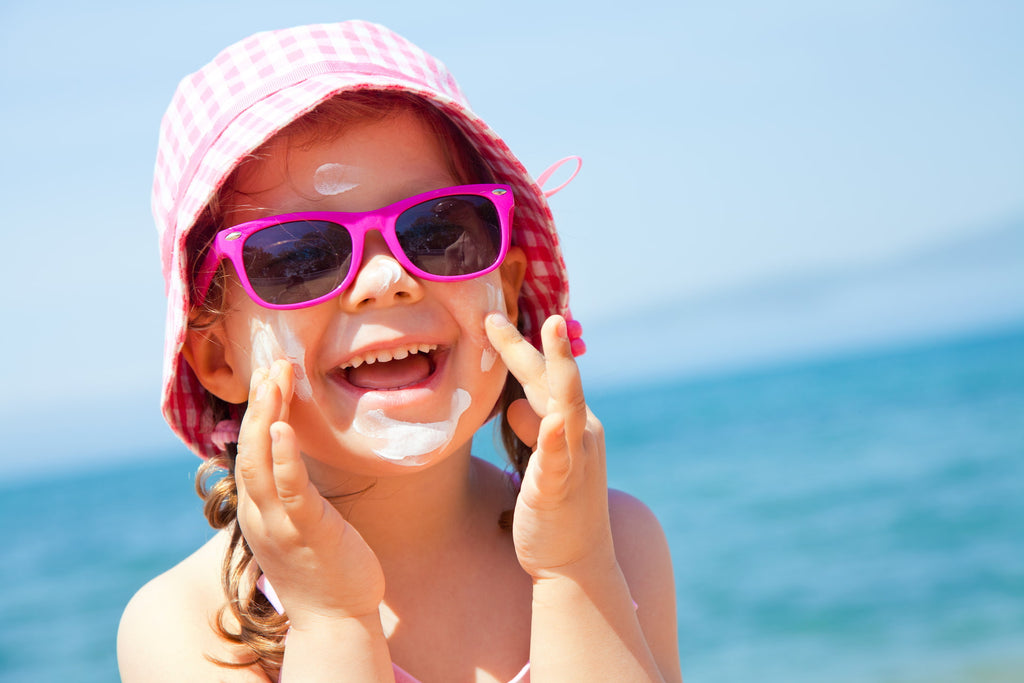Description
Suitable for use on children from 6 months’ old, these products give skin high level protection while being suitable for sensitive and even atopic skin.
Free shipping over £50
£63.99
Suitable for use on children from 6 months’ old, these products give skin high level protection while being suitable for sensitive and even atopic skin.
Shake before using. Apply evenly and generously before sun exposure. Reapply frequently, especially after swimming or sweating.
Avoid direct contact with eyes and mucous membranes. Avoid sun exposure at peak hours, when sun is strongest. Babies and young children should not be exposed to direct sun.
Studies show that just one episode of blistering sunburn in childhood can increase our chances of skin cancer by around 50%.1 And though young skin heals faster than grown-up skin, it’s more vulnerable to injuries including sun damage from UV exposure. This is due to its structural differences including a lower concentration of melanin, thinner skin structure, and an incomplete skin barrier. That’s why it’s so important to protect your child’s skin from the sun’s rays, particularly during long or high periods of sun exposure. It is also crucial that we educate our children about the harmful effects of the sun and the power of good sun habits, so they can grow up with healthy, protected skin and a much lower risk of developing skin cancer in later life.
UVB rays are strongest in the summer, especially between the peak hours of 11am and 3pm, as well as in locations close to the equator and at a high altitude. But whether or not we get sunburn actually has nothing to do with temperature,2 so we mustn’t be lulled into a false sense of security by cool breezes or cloudy skies.
UVB radiation does most of its damage in the spring and summer. UVB rays have short wavelengths which focus their damage on the skin’s surface. The visible results of UVB exposure are sunburn, along with eventual pigmentation and dryness. UVB radiation also causes DNA damage to skin cells, which can lead to genetic mutations and cancer.
Meanwhile, UVA radiation is present all year round, no matter the weather. UVA rays have long wavelengths that can penetrate deep into the skin. There are no immediate visible signs of damage, but UVA exposure will eventually be observed in the form of premature skin ageing, including lines, wrinkles and sagging skin.
The sun also produces visible light and infrared-A. These forms of radiation have a negative impact on the skin by causing skin cell damage, collagen breakdown, and a weakened skin barrier. This leads to unhealthy skin that is more at risk of skin cancer.
UV radiation is the proven cause of non-melanoma cancers, and a contributing factor to melanoma.
Sunburns at a young age are strongly correlated with melanoma in later life. In fact, sun exposure during childhood and teenage years have been proven to play a role in the cause of all types of skin cancers.3 Research has also found show that a higher number of sunburns in our late teens and early twenties increase our chances of developing melanoma.4
Children’s skin is more sensitive to the sun’s rays, which is why protection in childhood years is essential. It’s so important for our children to start practicing healthy sun behaviours during early childhood, as it will encourage habits to be established, including wearing a high-level, broad-spectrum SPF, wearing a sun hat and sunglasses, and seeking shade.

For children under the age of six months, they must be kept out of direct sunlight at all times. Parents and carers should also be careful to avoid excessive heat, because babies can’t control their bodily temperature like adults. Once a child has reached six months of age, they can spend a short amount of time in the sun, but must be covered up with loose protective clothing, a broad-brimmed hat and a high-level, broad-spectrum SPF.5
Keep children in the shade during the peak hours of sunshine, and don’t forget to top up sun protection, especially after swimming or towel-drying.
Of course, it can be difficult to apply sun protection to your children, especially wriggly toddlers who are extra excited to be out in the sun. Children with sensitivities may also be difficult to convince. Older children can also be hard to persuade; if your teen is spending a day in the sun and you’re not present, you might be concerned that they won’t re-apply their sun protection or wear a hat. But there are steps you can take to help keep them protected.

Reviews
There are no reviews yet.